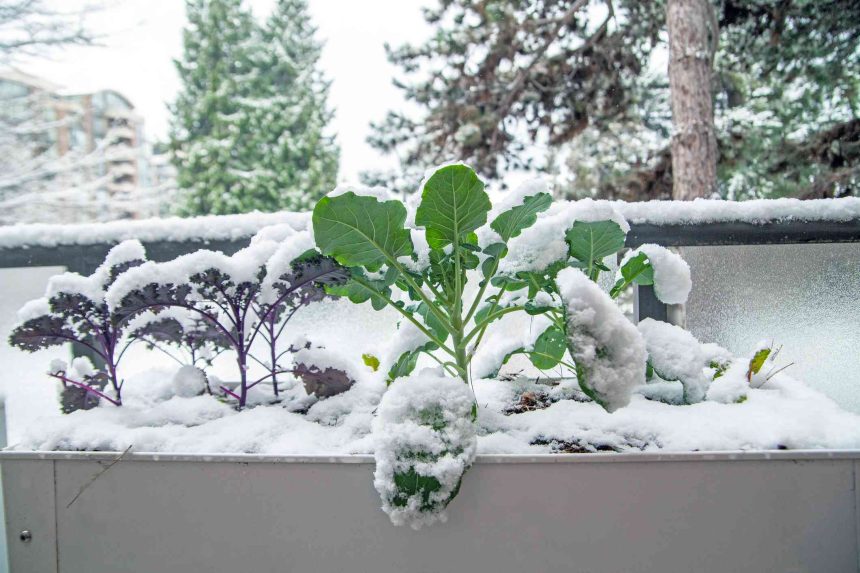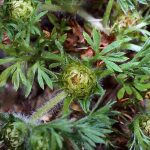We all know it’s important to eat your vegetables, and dark leafy bitter greens are a great addition to any diet. They are a great source of fiber, rich in vitamins K and C, provide iron, calcium, folate, and carotenoids, and act as antioxidants to help remove free radicals from the body.
In addition to their nutritional benefits, bitter greens are easy to grow in the winter, and tastier for it; cold temperatures break down starches into simple sugars, producing a milder, sweeter taste more palatable for even the pickiest of eaters.
Learn more about the 5 easiest bitter greens to grow in a patio container or your garden this winter.
Meet the Expert
James Myers, Ph.D., is a professor of vegetable breeding and genetics at Oregon State University, Corvallis.
Justin Ballew is a fruit and vegetable research associate at Clemson University.
Tania Ciolko / EyeEm / Getty Images
Spinach plants (Spinacia oleracea) prefer cooler weather and will produce new tender growth if harvested regularly. In the fall, wait until the soil temperature has dropped below 70°F for good seed germination and sow in a nutrient-rich, loamy soil. You can also purchase seedlings for a quicker harvest.
Harvesting of leaves that are between three and six inches long can begin about 37 to 45 days after planting. Start by picking the outer leaves and then harvest the newer leaves as they reach the desired size.
“A 3-inch high raised bed with good drainage will reduce the problem of damping off in young seedlings,” says Clemson University fruit and vegetable research associate Justin Ballew.
Want more gardening tips? Sign up for our free gardening newsletter for our best growing tips, troubleshooting hacks, and more!
The Spruce / Debbie Wolfe
Kale (Brassica oleracea) is one of the most popular greens to grow in winter because there are so many varieties. You can grow kale from seed or transplants for an earlier harvest. The best soil temperature for planting kale is 60°F to 65°F and every variety will have a sweeter taste if it is harvested after the first frost.
Decorative vs. Delicious Kale
While kale is often grown as an ornamental plant to add color to winter gardens, choose a variety optimal for eating.
- Starbor: green leaves, ready to harvest in 55 days.
- Red Russian: purple leaves, ready to harvest in 50 days.
- Scarlet: red leaves, ready to harvest in 55 days.
The Spruce / Autumn Wood
Cabbage (Brassica oleracea) is a cool-weather crop that forms a tight center head of the most tender leaves. While it can be grown from seed, cabbage seedling transplants will bring an earlier harvest.
Cabbage grows best at around 60°F to 65°F but can tolerate temperatures down to 20°F. Plant spacing will affect how large the head forms so each plant should be at least 12 inches apart. Cabbage plants prefer evenly moist, well-draining soil throughout their growing time.
Cabbage requires about 70 days to mature from the time of planting. Once the heads are firm to the touch, they are ready to be harvested.
The Spruce / K. Dave
Collards (Brassica oleracea var. viridis) are considered a delicacy in the southern U.S. when at their best in the winter after the first frost. The new, tender collard leaves can be eaten raw but larger leaves must have the center stem removed and then cooked for the best flavor.
Collard plants grow with a center stalk and the leaves should be harvested from the bottom of the plant. Pick only a few leaves from each plant so the plant will continue to grow upward producing more leaves.
Ballew says that collard microgreens will be ready to harvest 10 to 15 days after seeding with the plant reaching full maturity in 60 to 80 days depending on the cultivar.
lzf / iStock / Getty Images Plus
Mustard greens (Brassica juncea) are grown for their spicy leaves and seeds. Some varieties are grown for their seeds used to flavor brown mustard. If you’re looking for bitter greens, these cultivars are exceptionally tender and flavorful:
- ‘Carolina Broadleaf’: tender, lightly ruffled, light green leaves
- ‘Red Giant’: large, maroon-tinged leaves
- ‘Savannah’: a milder, hybrid mustard with smooth, rounded leaves
Mustards reach maturity between 25 to 50 days from sowing, depending on the cultivar. Regular harvesting will help the plants continue to produce tender leaves. As warmer temperatures arrive, the plants will bolt and should be removed from the garden.
Why Grow Bitter Greens in Winter?
Bitter greens are a cool-season crop that should be planted outdoors in very early spring or late autumn. These plants can withstand freezing temperatures, and will not thrive in the heat and high humidity of summer.
Even if you can keep the plants alive during the summer, they will not be as tasty as those grown in winter. Periods of cold temperatures break down the starches in the leaves into simple sugars producing a milder, sweeter taste.
If you have enjoyed the rewards of gardening during the summer, planting bitter greens in the fall will provide nutritious, fresh produce throughout the winter.








